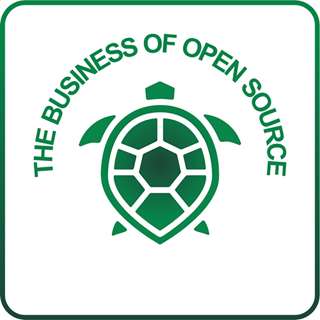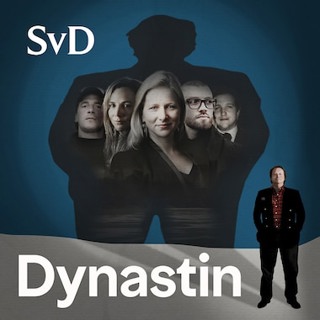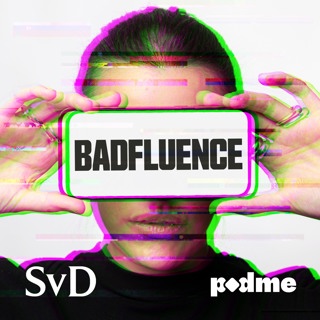
Earning Trust with Tom Hacohen
This week on The Business of Open Source, I spoke with Tom Hacohen, CEO and founder at Svix. We kicked off the conversation by talking about why Svix is an open core company… but Tom still initially didn’t think he’d be a good guest for the podcast. Unlike a lot of open source companies, Svix doesn’t make open source a huge part of its identity. Yes, there are business reasons for being an open source company, but the open source nature of the company isn’t plastered all over every piece of marketing material. So why does it matter? Developers prefer open source, and they’ll always choose the open source option if there is one. On the other hand, developers don’t often have buying power (and don’t even know how to buy software even if they did). But developers can influence buying decisions, and that can be important. We also talked about how there are different constraints that the open source project and the cloud version operate under. For example, ease of deployment doesn’t matter in the cloud version, because it doesn’t impact user experience at all. But the opposite is the case for the open source project, and that leads to different technical decisions. We talked about the problem getting information about people who use the open source project, because it is hard to get developers to talk. This is a puzzle that Tom says he still hasn’t cracked. Being an open source / open core company is a distraction, and it can be hard to manage externally and internally. We talked a lot about trust — how open source helps you earn trust, but you still need to earn and keep the trust. Want to talk more about the ins and outs of running open source businesses, and how open source companies win? Come to Open Source Founders Summit next May in Paris. And if you’re struggling to figure out how to monetize your open source company, you might want to work with me.
8 Okt 35min

Go-To-Market for Open Source Companies with Quentin Sinig
This week on The Business of Open Source, I spoke with Quentin Sinig, who has been the first “business” hire at three open source companies; Strapi, Kestra and now Pruna.ai. We covered a lot of ground in this conversation, which was especially interesting because it spanned three open source companies so we were able to talk about patterns Quentin saw at all of them, as well as how the ecosystem is changing now. We talked about the need to find product-market fit, particularly in the AI era — Quentin says that AI companies need to find product-market fit constantly, because the ecosystem is changing so quickly. Quentin mentioned hearing from an advisor earlier in his career that you can’t focus on both usage and revenue — but that in some ways you are forced to focus on both, especially now. When I asked how you decide which of the two goals you should throw more resources behind, he couldn’t say… it’s such a case-by-case decision that there isn’t an easy formula for deciding. Lastly, I had a burning question: What actually does go-to-market mean? And what does it mean to be a “Head of Go To Market?” Quentin says that to a large extent it’s a euphemism for sales, but there’s a little more to it than just that. In his mind, Go-To-Market is a much less siloed function than sales. It’s about getting the entire company aligned, in the expectation that ultimately that will lead to sales. But it’s not just about forcing prospects down the funnel or cold calling, either. Want to talk more about the specifics of go-to-market for open source companies, with people who have been there? You should join Open Source Founders Summit, an in-person conference for leadership in open source companies. The next edition will be May 18th and 19th, 2026 in Paris. And curious about my consulting options? Check out how I help open source companies here.
24 Sep 34min

Open Foundations with Or Weis
This week on The Business of Open Source, I spoke to Or Weis, the CEO and co-founder of Permit.io. Or is a serial entrepreneur who has had a long career in developer tools. We talked about Permit’s relationship with open source, including of course the open source projects that they create and maintain. One thing to note is that none of Permit’s open source projects are branded as “Permit.” They are all separate from the permit.io brand. On the other hand, Or talked about the essential balancing act for open source companies… figuring out the balance between what goes in the open source project and what goes in the commercial offering. “Companies that get it wrong die, and companies that get it right end up flourishing,” he said. Or Weiss has a theory about open source businesses that he calls ‘open foundations.’ He thinks that this model is better than open core — to be honest I think open foundations is a type of open core, but I think that Or’s argument about how to do open core are fundamentally correct. Permit’s primary open source project is OPAL, and the way that Or puts it is that Permit uses OPAL, but it is not OPAL. The two pieces of software are different and have different value propositions. He also talked about how important it is for everyone to understand what features belong in the project and what belongs in the product… by ‘everyone’ he means product managers in your team but also members of the open source community. We also talked about how you have to have a moat for your product, and especially with AI coding tools a lot of models do not have a moat anymore. Which is why he doesn’t think that just SSO and a fancy UI are enough of a difference between project and product anymore. If you are interested in having more conversations about building open source businesses, join us next May in Paris at Open Source Founders Summit!
17 Sep 37min

Straddling open source software and the hardware industry with Rob Taylor
This week on The Business of Open Source, I spoke with Rob Taylor, CTO/CSO and founder of ChipFlow. Although ChipFlow is unambiguously a software company, it creates software that facilitate the creation of semiconductors, so it straddles the software and hardware worlds.Some of the things we talked about include: The state of open source in the semiconductor space, and why that matters. A large part of it is the high cost of proprietary software for chip design, and the fact that there are a lot of barriers to entry, both for the design software and to chip creation. Rob also talked about how an open source approach is the only way to bridge between research institutions and universities and the commercial world — too often, researchers would do brilliant work during a Ph.D. program and then it would be completely lost when they entered the commercial world. On the other hand, open source is little-known and mistrusted in the semiconductor space. Rob described it as a marketing liability, which is why it’s downplayed on the company webpage. —> I come across this more often than is often recognized inside the open source bubble. It’s one thing to build an open source company in the software infrastructure space, where open source has a positive reputation and is often seen as simply table stakes; it’s quite another to build an open source company in a conservative industry where open source doesn’t have a positive image. Perhaps the most interesting thing is that this means you have to have a reason other than marketing to build and maintain the open source project. Want to join others to talk about the challenges and opportunities in building open source companies? Join us at Open Source Founders Summit next spring in Paris.
10 Sep 34min

The double-edged sword of big initial customers with Taco Potze
This week I’m back from vacation and I have a new episode of The Business of Open Source, with Taco Potze! Taco is the co-founder and CEO of Open Social. A couple interesting takeaways from our conversation: When you’re transitioning from a services company to a product company, it’s much easier if the product you work on is connected to the services your clients are already paying for. Landing a huge customer, particularly if it’s your first customer, can be a double-edged sword. On the one hand you have a lot of revenue, but you also risk becoming your customer’s servant and losing control of your product’s roadmap. You can’t do everything; and particularly you can’t build a product that meets the needs of small, medium and large organizations. Sometimes you need to re-launch / reposition. Open Social recently completely changed their positioning earlier this year in response to changes in the marketplace and how their customers were use the product. Customers might not care about open source, but they care very much about lock-in, exit costs, and data sovereignty. This is all a part of risk management that CIOs are thinking about a lot. Some organizations use both the self-hosted and the SaaS product. One of the biggest / most instructive mistakes they made was maintaining completely separate codebases. When they invested in merging the codebases, it dramatically improved the customer experience in relation to updates, bug fixes and simplicity of the engineering effort. We talked about Open Source Founders Summit at the end — and which is where I first met Taco. If you’re interested in joining us in 2026, sign up for the newsletter! Tickets will be on sale soon.
3 Sep 39min

Build for Dual Audiences with Pablo Ruiz-Muzquiz
This week on The Business of Open Source, I spoke with Pablo Ruiz-Muzquiz, CEO and co-founder of Penpot. We started out by talking about the transition from services company to product company, how they decided to pivot to building a product company and when they made the decision to go all-in on the product. Perhaps the most interesting part of the conversation is the discussion of the business model. It’s almost like open core in reverse. Penpot open source is fully featured and very flexible; but there’s a separate product available for business stakeholders to control how Penpot is used in their organizations. So when you need gouvernance and control, you should pay for the additional product to control Penpot usage in your organization. But if you don’t need to limit how Penpot is used at all, you (and everyone else in your organization) can use the open source version without the additional controls. We also talked about dual audiences. Penpot has to appeal to designers and developers, and building something (and ultimately marketing/selling it) that has to appeal to two very different stakeholders. We talked about how the company manages that balance, and why they want to have more developers using Penpot than designers. We talked a bit about Open Source Founders Summit as well. If you’re interested in learning from other founders and leaders in open source companies, join us at Open Source Founders Summit in Paris!
2 Juli 39min

Managing community contributors with Alya Abbott
This week on The Business of Open Source I talked with Alya Abbott, COO of Zulip, about managing community contributors. This is a hot topic for open source companies — and for that matter, open source projects in general, including those that aren’t being monetized in any way. It’s a bit of a third rail in the open source ecosystem to suggest that there’s a downside to community contributions, but there undoubtably is. At Zulip, they think about the contribution process as a product. They think about the contributor experience and making it as easy as possible for new contributors to get started. They even did user experience testing on the developer experience for contributors — and made changes as a result. And why does this even matter? Because when it’s done right, community contributors can end up increasing your development velocity. Especially on things like integrations, the community contributors can really push things forward. There’s much more to this episode, so check it out! And if you’d like more content about open source companies, or if you’re the leader of an open source company, join the mailing list for Open Source Founders Summit.
25 Juni 36min

Building a Dual Growth Flywheel at GitLab with Nick Veenhof
This week on The Business of Open Source, I spoke with Nick Veenhof, Director of Contributor Success at GitLab. GitLab has probably the most well-articulated open source strategy out there, and we talked about the two main prongs of that strategy, the co-create strategy and the dual flywheel strategy. We also talked about incentivizing individuals versus incentivizing companies and how to build recognition system as part of the way to encourage people to contribute. We also talked about how to make sure that contributing is accessible — thinking about the “time to success” for contributors in a similar way as how you would think about time to value for software users. The dual flywheel strategy This strategy is based on the idea that as an open source company you want to simultaneously push growth in your open source user base and your customer base, and that the two should reinforce each other. The co-create strategyThe co-create strategy involves encouraging paying customers to contribute to the open source project. In other words, customers who are already paying are encouraged to also invest engineering resources to improve the product. Nick said that this has obvious benefits for GitLab, but it also has benefits for the customers. They end up with a much better understanding of the product, and end up getting more out of the product then they would otherwise. If you want to learn more, I highly recommend having a look at the GitLab Handbook, particularly the section on strategy. And if you want more information about working with me, check out the options here.
18 Juni 36min





















